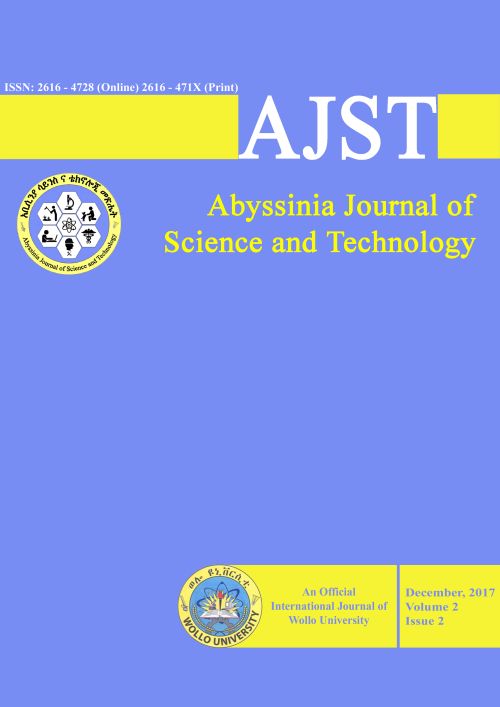Main Article Content
Antimicrobial resistance profile of Salmonella species isolated from slaughtered cattle carcass and slaughter house environment in Dessie municipality abattoir, Ethiopia
Abstract
Food animals harbor a wide range of Salmonella and so act as sources of contamination. Salmonellosis is more aggravated by the ever increasing rate of antimicrobial resistance species in food animals. This study was aimed at investigating antimicrobial susceptibility of Salmonella species from slaughtered cattle carcass and slaughter house environment in Dessie municipality abattoir from December 2014 to August 2015. A total of 384 samples were collected, from 128 slaughtered cattle carcass (128 samples) and 256 environmental samples (128 from eviscerating knives and 128 from eviscerating hand) and examined for the presence of Salmonella. Out of 384 samples collected, 19 (4.95%) showed positive results for Salmonella species. From these, 8 (42.11%) of the isolates were Salmonella group-A, 7 (36.84%) Salmonella arizanae and the remaining 4 (21.05%) Salmonella isolates were Salmonella Typhi. All Salmonella isolates were tested for their susceptibility to 9 selected antimicrobial agents by the Kirby-Bauer disc-diffusion method. Salmonella isolates in this study were highly resistant to cefoxitin 13 (68.4%) followed by ampicillin 12 (63.2%). About 94.7% of the isolated Salmonella species were resistant to one or more antibiotic agents. However, all isolates (100%) were sensitive to ciprofloxacin, co-trimoxazole and gentamicin. Consumer aware on proper cooking of meat and meat products before consumption, and restricting, discriminate and appropriate use of antibiotics in the food animal industry were solutions to reduce the prevalence of antimicrobial resistance Salmonella in slaughtered cattle carcass and slaughter house environment.







